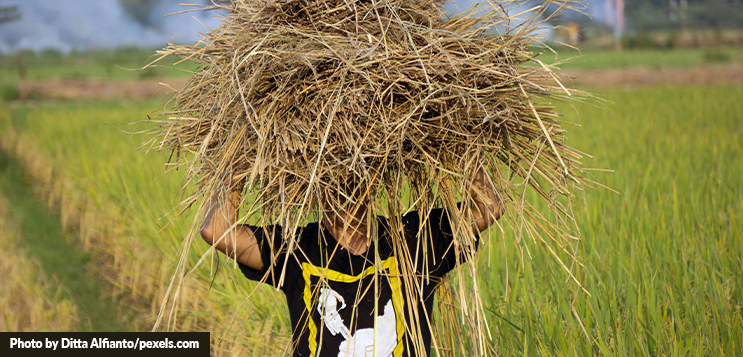
When over 45% of India’s population depends on agriculture for their livelihood, and agriculture contributes nearly 16% to our GDP, we cannot afford to get it wrong.
The Green Revolution once promised higher yields and prosperity. But what it actually did was unleash a flood of chemical fertilisers and pesticides across our fields. Over the years, Indian farmers, and the very soil they till, have become hooked on these chemicals. Like a dangerous addiction, this dependency has created a completely reactive system.
What does that mean? It means we’re farming by instinct and afterthought. We grow crops based on personal logic, guesswork, and habit. And then we throw in fertilisers to compensate for any lack. When it rains or the wind blows in the opposite direction, we brace for pests by spraying chemical, often fatally harmful, pesticides across acres in panic. What about planning ahead? That is a luxury most farmers can’t afford, or haven’t been taught to.
But, this approach is starting to show its cracks: depleted soil, falling yields, and now, trade consequences. As countries that buy Indian spices, tea, and other produce are tightening their rules, Indian produces with chemical residues of banned chemicals, or products grown using pesticides harming the environment are being rejected. India’s $48 billion agri-export economy is now under pressure to clean up its act.
So what’s the way out for Indian agriculture?
A growing body of experts are pointing to scientific crop management—a data-led approach that prioritizes preparation over reaction. Think of it as the opposite of guesswork. Instead of reacting, it plans—right from seed to harvest. It’s about creating the best possible environment for crops to thrive and making informed decisions at every stage: which crop to grow, when to plant, what the soil needs, how much water to use, and how to control pests without harming the environment.
Unlike traditional farming, scientific crop management relies on data and technology. Soil testing to guide fertiliser use and suggest crops to grow in the season, satellite data to track moisture, and even AI to recommend sowing dates. The goal is to get the maximum output using the least input, and most importantly without poisoning the earth and the products.
How viable is scientific crop management?
Recently, Chief Minister of Andhra Pradesh, N. Chandrababu Naidu, directed his agriculture department to align crop planning with global market trends (crops in demand, organic farming methods, etc) using scientific crop management so that farmers receive premium prices for their crops. But while that’s a great move on paper, it is not like he is the first person to think in this direction.
Several scientific schemes exist, but on paper
Truth is, India has introduced several smart schemes already that align with many principles of scientific crop management, but the real challenge, as always has been the case in India, lies in execution.
For instance, one scheme, the Soil Health Cards, which deploys experts to assess and provide farmers with a detailed report card of the soil condition on their farms. That report suggests how they should go about planting crops, which crops to plant, and what and how much fertiliser and pesticides to use, as well as how much water should be used for irrigation – everything that would align with keeping the soil healthy while ensuring optimum yield. According to government data, these precise nutrient data can save farmers up to 10% in fertiliser costs and improve yields by 5–6%.
Similarly, there are schemes like Pradhan Mantri Krishi Sinchayee Yojana (PMKSY) to make irrigation efficient (addressing the challenges of water scarcity and unsuitable irrigation methods); Paramparagat Krishi Vikas Yojana (PKVY) to support organic farming (with monetary help and expert guidance); and the Digital Agriculture Mission to link farmers with knowledge. But most of these programmes stumble at the same point—implementation.
Too often, these schemes remain on paper or are reduced to one-off awareness campaigns. Field officers are overburdened. One officer is expected to support dozens of farmers across villages. Farmers don’t get follow-ups. Even, Krishi Vigyan Kendras, meant to serve as knowledge hubs, face staff shortages or inconsistent support. And eventually, farmers fall back into the same old cycle of choosing a crop based on instinct, over-spraying and over-fertilising.
Can scientific crop management help us course-correct in time?
For scientific crop management to take root in India, it will take more than schemes, slogans, or well-intentioned announcements. What it really needs is end-to-end planning, consistent funding, trained personnel, accessible infrastructure, and the kind of ground-level support that enables precision agriculture to scale.
Just as importantly, it needs market mechanisms that reward sustainable farming—whether through premium pricing, assured procurement, or easier access to certification. Because expecting farmers, especially smallholders already struggling with debt and narrow margins, to take that leap alone is simply unrealistic.
That said, Indian farmers are not resistant to change, they’re cautious, and understandably so. But even modest success stories show what’s possible when the system actually works. In Andhra Pradesh, for instance, over 1.4 lakh farmers reportedly saw their incomes rise by an average of 31.8% after adopting micro-irrigation under PMKSY. Similarly, since 2015–16, nearly 15 lakh hectares have been converted to organic farming under PKVY, involving over 25 lakh farmers across 52,000 clusters.
These figures suggest that when proper support reaches the ground, farmers respond. The real gap lies not in willingness, but in delivery.
And time is no longer on our side. With trade partners like the European Union ramping up sustainability regulations, not just for direct imports, but even for indirect sourcing, the cost of delay is no longer theoretical. Scientific crop management may not be the only solution, but it is certainly one of the most actionable tools we have.
The question is: will we implement it widely enough, and fast enough, before the market forces us to?
